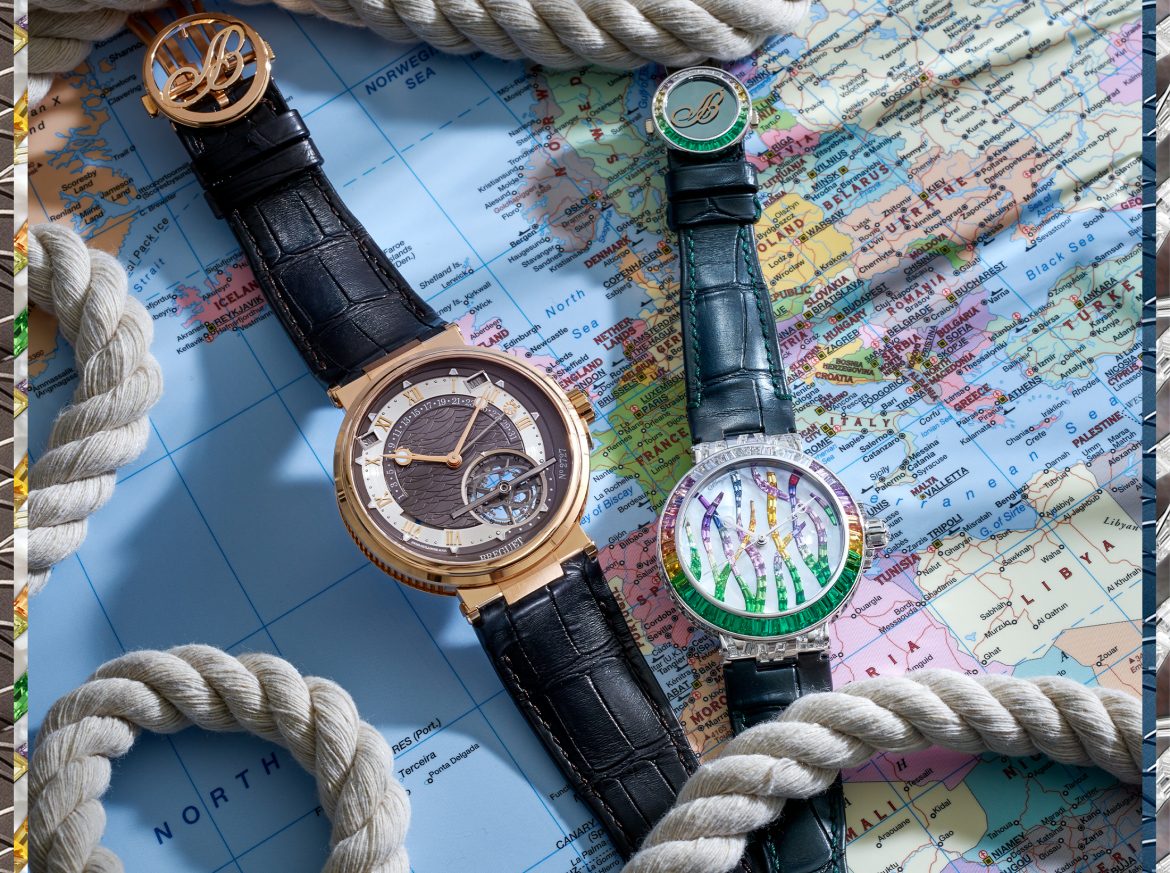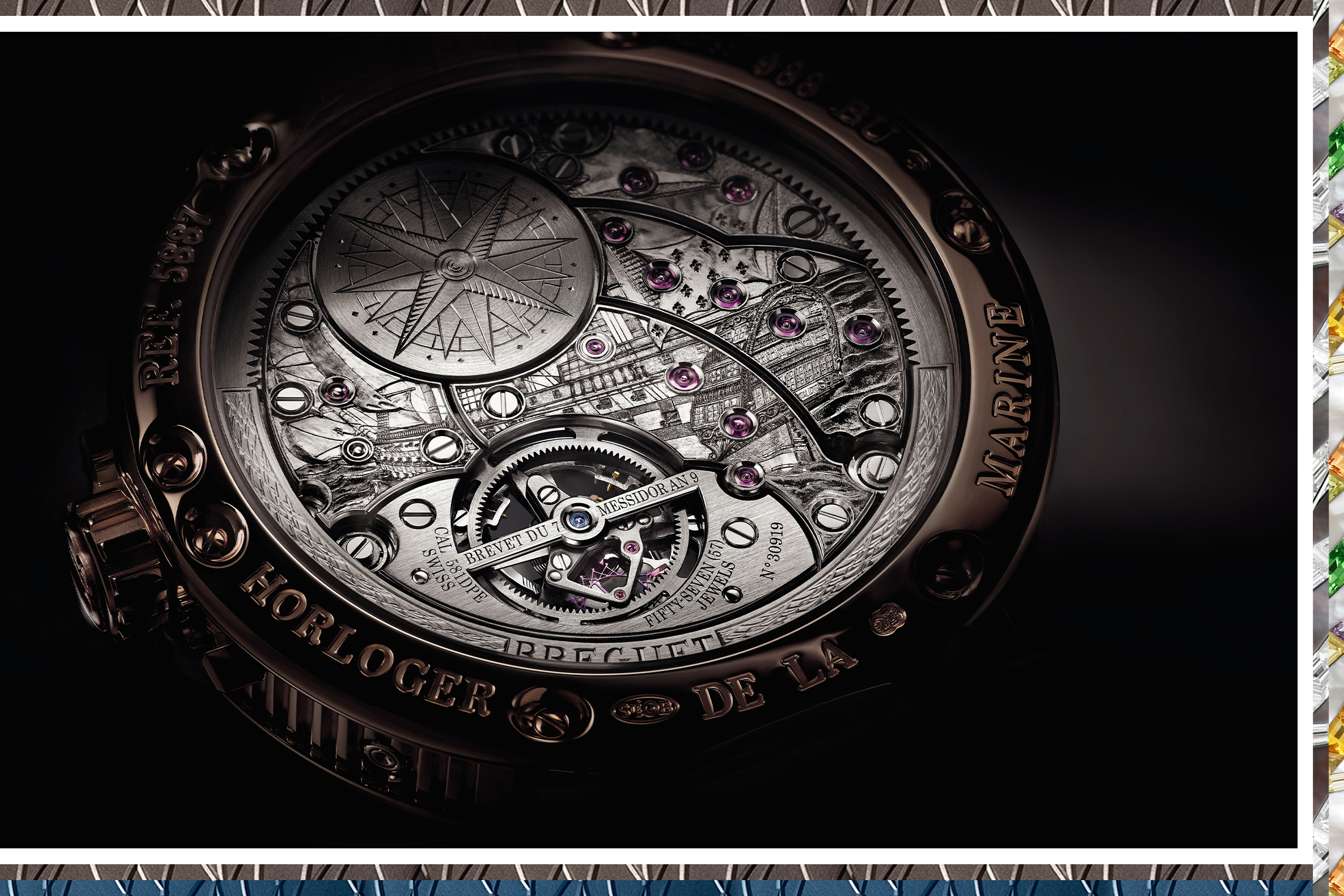Here’s proof that icons needn’t be fixed, whether in terms of aesthetic or technical details.
We often think of iconic watches as immutable classics: timepieces with signature elements that have, over time, emerged elevated to become instantly recognisable. Breguet has taken a different view on this. The brand doesn’t see its icons as emblems to be preserved, but rather platforms to explore different concepts with. This approach is best seen in the Marine collection.
A Watchmaker for the Navy
Long a mainstay within Breguet’s line-up, the Marine alludes to founder Abraham-Louis Breguet’s appointment as the official watchmaker of the French Navy in 1815 by King Louis XVIII. The title wasn’t just an honour, but also an endorsement of Breguet’s expertise in chronometry. It was the Age of Sail, after all, back when open-ocean navigation was a treacherous affair; an accurate timepiece was the instrument that spelt the difference between a safe return to port or a shipwreck.
Breguet began its latest revamp of the Marine collection back in 2017, beginning with a single flagship model that showcased an updated design, which heralded what was to come. Other watches followed, including references in titanium with matching bracelets. Aesthetically, these new Marine timepieces were less elaborate than their predecessors, and leaned towards a streamlined design that was more contemporary than classical.
In a testament to the line’s strength of design and Breguet’s deft touch, however, the Marine remains resolutely so. There’s simply no mistaking it for anything else, and the latest models’ design language is quite obviously derived from their predecessors. What’s even more remarkable is the versatility of the Marine’s design. For proof, just look at the respective top-of-the-line models for men and women within the collection.
A Watchmaking Tour de Force
For the Marine Tourbillon Équation Marchante ref 5887, technical prowess and metiers d’art are the key elements to showcase. For a start, there is the tourbillon regulator at five o’clock.
Look more closely at its aperture, and you’ll also notice a kidney-shaped cam mounted on a transparent sapphire disc. This is the critical part of the running equation of time complication – a more complex (and less common) variant of the equation of time, which reconciles the difference between apparent and mean solar time. In this watch, the apparent solar time is simply read off the extra sun-tipped hand without any further calculations needed.

The annual cycle that this complication reflects is, in turn, complemented by the perpetual calendar. Like the running equation of time, the perpetual calendar here has a slightly different take on what’s commonly offered, in that its date is displayed on a sector with a retrograde hand.
On the artisanal front, the Marine Tourbillon Équation Marchante ref 5887 has much to show too. The wave motif on the central portion of the dial, for instance, showcases Breguet’s in-house expertise in guillochage. The movement’s bridges have likewise been engraved to depict the Royal Louis, a ship of the line of the Royal French Navy.
Femininity Personified
Meanwhile, the Haute Joaillerie Poseidonia ref 9509 is all about artisanal savoir faire and soft femininity. Named for the Posidonia oceanica seagrass, this timepiece portrays the eponymous plant by applying various precious stones to the mother-of-pearl dial using the invisible setting technique. The sparkle of emeralds, tsavorites, colored sapphires, and diamonds here serves as a strong contrast to the mother-of-pearl’s milky iridescence, with the lack of any discernible setting enhancing the overall aesthetics of the watch. Breguet has even taken things a step further by extending the gem-setting to the bezel and lugs – with invisible setting too, no less – making this timepiece a bona fide high jewellery watch.

Variety is the spice of life, and ref 9509 embodies this by coming in four different references. They differ by the predominant colour palette of their stones, with the three other references using predominantly diamonds, sapphires, and rubies to present white, blue, and red with respectively.

Placed side by side, ref 5887 and ref 9509 couldn’t be any more different from each other. Yet they trace a common lineage back Breguet’s first Marine timepiece from 1990. This common DNA is proof that an icon needn’t be fixed – whether in terms of aesthetic or technical details.

Artwork, additional feature and stylised images by Curatedition.
Related Links:
Breguet: A Seafaring Tradition



